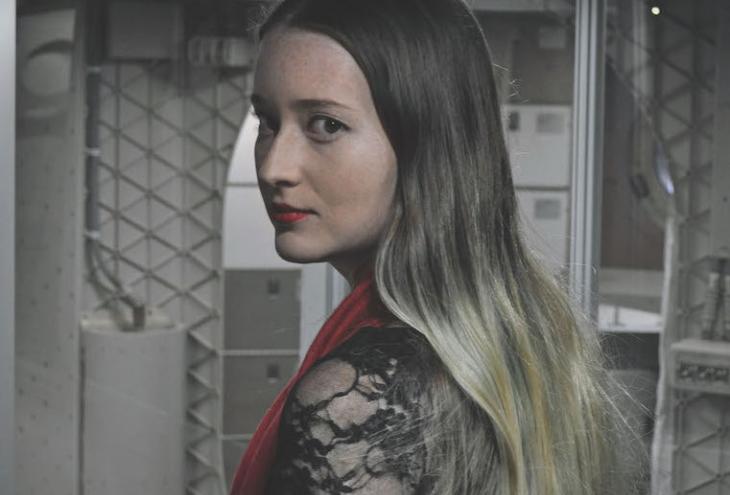As a little girl Kaitlin Russell had a big imagination. Her father fueled it by sharing his love of science-fiction movies, so for young Kaitlin, colonizing Mars wasn’t far-fetched and, she reasoned, there would have to be pets on Mars when people lived there and someone had to take care of them. “I knew I wanted to do something with space,” she recalls. “Space veterinarian?”
Russell is enrolled with the Echota Cherokee and is a descendant of the Haudenosaunee people. She grew up in Prattville, Ala., near Montgomery, and attended the local high school. That’s where her sci-fi imagination started to focus on robotics. She was the first person to sign up when her school started a robotics club. She learned to use power tools and built her first robot from scratch, not a kit. Russell would go on to design a robot that would win a Most Photogenic award and a Founder’s Award for Creative Design.
She went off to college at the University of Alabama in Huntsville, about a three-hour drive from her home. “I chose courses related to rocket propulsion and space mission development,” she says. Throughout her time as an undergraduate, Russell participated in space-related extracurricular activity teams for projects such as rocketry and payload design and competed in research poster presentation competitions. “One of the research papers I helped work on is published online,” she says.
As she progressed in school, she set a new goal. “My dream job, as unlikely as it sounds, is to go to space as an astronaut,” says Russell, who wants to be the first Native American woman to travel into space. She knows all about Dr. John Herrington, Chickasaw, the first tribally enrolled Native American to walk in space, and she wants to follow in his orbital footsteps. “My destination of choice would have to be Mars,” she says, “but I would be happy going to the moon or staying on the International Space Station and doing experiments or repairs.”
She’s remained committed to robotics and going to space as well as introducing others to that world. Russell gave classes to kids about physics concepts, rocketry, and basic space botany and received a regional Volunteer of the Year award at a VEX Robotics competition in Montgomery, Ala. During high school she worked with the Alabama Inter-Tribal Council assisting Natives with
Workforce Improvement Act initiatives, which help with education and job training. “I would love to see more Natives involved in STEM and robotics, as I feel we are severely underrepresented,” she says.
Then came another big award — in fact, a worldwide recognition. “The 2019 VEX World Robotics competition was very exciting, and I enjoyed watching the high school and middle school teams compete,” says Russell. “There were teams from all over the world, and I was particularly pleased to see that VEX recognized Native nations as their own nations during the Parade of Nations ceremony.”
For Russell, the event was especially exciting because, thanks to her STEM outreach and volunteer history, she was recognized with the honor of being one of three Inspiration All-Star Hall of Fame inductees. “I was very excited!” she says. Russell won the coveted title in April, and her name will soon be added to the VEX website.
“My dream job . . . is to
go to space as an astronaut,” says Russell, who wants to be the first Native American woman to travel into space.
Russell’s focus on space continues to be a constant in her life. She graduated from the University of Alabama in December 2018 with a BS in aerospace engineering. “I have worked on contracts for NASA, the Missile Defense Agency, and the Space and Missile Defense Command,” she says. Currently, she’s part of a team working on a CubeSat testing project. (Affordable cube satellites are miniature satellites that can orbit a planet.)
She also works with NASA’s InSPIRESS program, a free, nationwide STEM-based program for high school students who compete in groups to develop a payload concept for a theoretical space mission.“Teams learn the design process, engineering concepts, and presentation skills that will help them when they enter the workforce,” she says.
Russell continues to work hard. “I currently work at the University of Alabama in Huntsville as a researcher,” she says, having started as a part-time research assistant and moving up to a full-time research associate helping run a research project.
She has been active in AISES since her undergraduate years and recently became a Sequoyah Fellow. She’s also hoping to be formally inducted at the National Conference in Milwaukee, and to have the opportunity to meet another Sequoyah Fellow, astronaut Dr. John Herrington.
After all, she would like to follow in Dr. Herrington’s footsteps. “I would like to become the first Native American woman in space, though I would still be excited if someone beat me to it,” she says. “The sooner that milestone is reached the better.”













